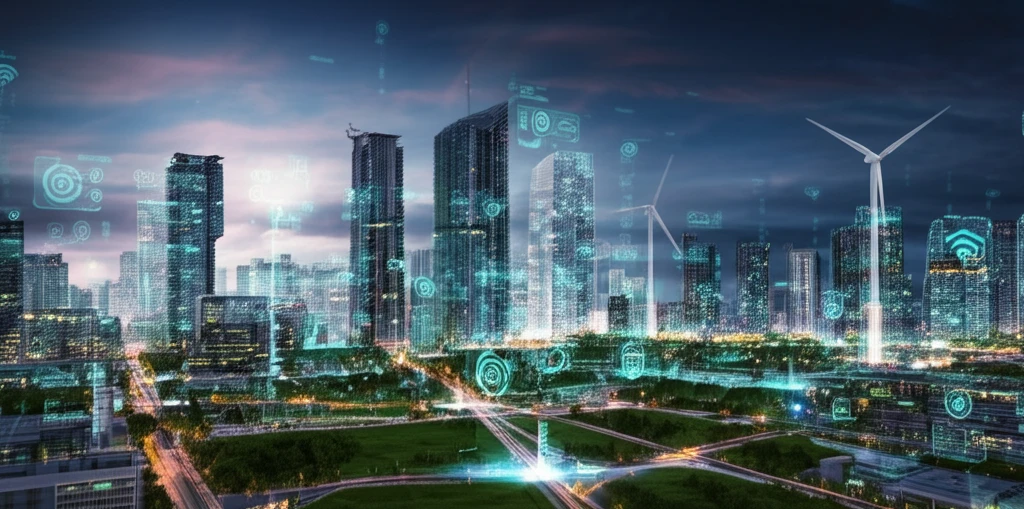
Smart Grids and Sustainable Energy: How AI is Powering a Greener Future
"Explore how machine learning is revolutionizing energy management, making smart grids a reality and paving the way for sustainable energy solutions."
In an era defined by the urgent need for sustainable energy solutions, the concept of the smart grid has emerged as a beacon of hope. Traditional energy systems often grapple with inefficiencies, blackouts, and a reliance on fossil fuels, but smart grids promise a radical transformation. These advanced networks integrate renewable energy sources, optimize energy distribution, and ensure reliability, marking a significant step toward a greener future.
At the heart of this revolution lies artificial intelligence (AI) and machine learning (ML). These technologies are not just buzzwords; they are the engines driving the enhanced capabilities of smart grids. By analyzing vast datasets, predicting energy demand, and making real-time adjustments, AI is making energy systems more efficient, resilient, and sustainable. This is particularly crucial for managing intermittent renewable energy sources like solar and wind power.
This article explores how AI and machine learning are being deployed in smart grids to address key challenges in energy management. From optimizing microgrid operations to ensuring grid stability and predicting potential blackouts, we'll dive into the innovative solutions that are shaping the future of energy. Join us as we uncover how AI is not only enhancing our energy systems but also contributing to a more sustainable and environmentally friendly world.
Optimizing Microgrid Management with AI: A Balancing Act

Microgrids, localized energy grids that can operate independently or in conjunction with the main grid, are crucial for integrating renewable energy sources and providing reliable power to communities. However, managing these microgrids effectively requires a delicate balance of supply and demand, especially when dealing with intermittent renewable sources like solar and wind. This is where AI steps in to orchestrate the energy flow.
- Predictive Analytics: AI algorithms forecast energy demand, considering weather, time, and past usage.
- Resource Optimization: AI balances renewable energy use with backup generators to reduce waste.
- Cost Reduction: AI minimizes operational costs through efficient energy distribution.
The Road Ahead: Embracing AI for a Sustainable Future
As we continue to grapple with the challenges of climate change and the need for sustainable energy solutions, AI-powered smart grids represent a transformative opportunity. By optimizing energy distribution, enhancing grid reliability, and integrating renewable energy sources, AI is paving the way for a greener future. As AI technology advances, we can anticipate even more innovative solutions that will further enhance the capabilities of smart grids and accelerate the transition to a more sustainable energy landscape. Embracing AI in energy management is not just a technological advancement; it's a commitment to a cleaner, more resilient, and sustainable world for generations to come.
